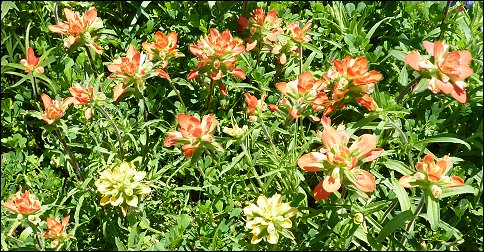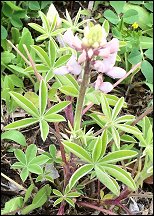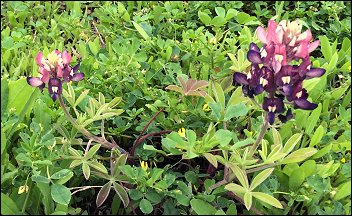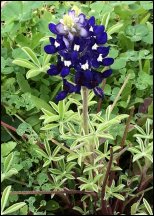|
If you have at least an acre of land to start wildflowers, it might be best to do your own blend rather than buy a prepared mix that might not be compatible with your soil type, climate, or resistant to critters that roam your place. Wildflower seed
comes in all shapes, sizes, and weights. They are measured so many
pounds to the acre and so many square feet to the ounce. My two favorite
wildflowers for comparison are:
Lady Bird's Legacy
Wildflower Mix for 2014 contains: Texas Bluebonnet, Indian Paintbrush,
Prairie Verbena (relative of Moss Verbena), Plains Coreopsis, Indian Blanket,
Lemon Mint, Black-Eyed Susan, plus Purple Coneflower, Pink Evening Primrose,
and Winecup (relative of Tall Poppy Mallow).
We found that
doing our own mix saved money and we could adjust the amount of this seed
or that one each year based on which ones were doing best in our yard.
* Cornflower is a European Native and available at Wildseed Farms. ** Prairie Verbena is only available at Native American Seed and is related to Moss Verbena - either one or both will grow. Mixing 26 pounds of various seed is a major chore, so we've often arrange for the Wildseed Farm to do our custom blend each year. We have them divide the blend into 5 bags of 5+ pounds each which makes it easier to add kitty litter to each one and pour it in the seed spreader. Notice that Wildflower Farms does not carry Prairie Verbena, so we order that separately from Native American seed and add it to our blend. Some years, I'll try new kinds of seed (purchased where ever I can find it) and add it too. Or if something is doing really well (such as blanket flower), we'll put less out the following year since the blooms should have scattered seed in our yard. Wildflower seed growers often have a crop failure of a particular seed which means you might have to look for other sources if you want to include it in your annual mix. My list of favorite seed suppliers are all from Texas and usually I can find everything we want to include in our mix from one of them. See Sources below.
COLORS: Bluebonnets now come in several colors. Texas A & M Maroon is now available in seed and potted plants; a new Lady Bird deep blue is coming on the market. Basic plain seed can produce all kinds of colors as you can see above. We loved the pink ones and also had a few white ones (but I forgot to take a picture!). Mixing them together in a yard or wildflower patch is fun, but when they cross-pollinate to produce next years seed, the odd colors default back to basic blue. This means if you LOVE the maroon color (for instance), then plant or sow all maroon if you want to stay with that color. INOCULATED: Our main home is near Corpus Christi and we put out a LOT of bluebonnet seed over the years with no success! We finally gave up, until we figured out what was missing... inoculant! When we built our house in the Hill Country, our bluebonnet seed came up. What happened? Bluebonnets are a legume and need an inoculate (a bacterium) in the soil to thrive. That special inoculate is in much of the Hill Country. It was NOT in South Texas... well, no wonder bluebonnets never liked our first home! The easiest way to tell if bluebonnet seed will do well is to look around your area... do you see bluebonnets growing nearby in yards, fields or parks? If so, you probably have inoculant in the soil and can put out all the bluebonnet seed you want. If you do not find any bluebonnets growing in the area, then you have two choices... buy seed that has been inoculated - we buy ours at Turner Seed (see above) OR buy bluebonnet plants from your local nursery and add them to your landscape or yard where you'd like bluebonnets to grow. The garden center ones have inoculant in the potting soil and it should slowly spread where ever you put bluebonnet plants. The next year, you can sow seed in that same area and the bluebonnets should sprout. SCARIFIED: Scarified basically means to nick the hard outer seed coat to help it sprout and most seed you buy will already be scarified... meaning it should germinate the first year. Any seed produced by those plants will have their hard coat and may not ALL germinate the next year, but a few years later. This is mother nature's way of protecting seed from harsh conditions, such as drought. It's also one reason that you should keep sowing bluebonnet seed for a few years after you start your project until the blooms reach what I call "critical mass" - an explosion of Bluebonnets. They should then produce an abundance of blooms each year without your having to sow more seed. The photo below shows Paintbrush in "Critical Mass" - thick enough to be gorgeous and to produce plenty of seed for future years. Yes, even Paintbrush can generate surprise colors - we loved the white ones tinged with gold.  |


